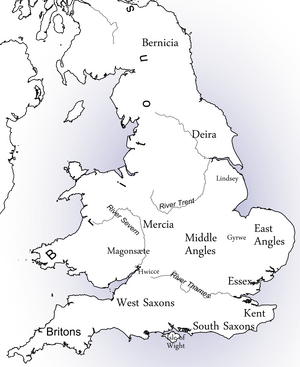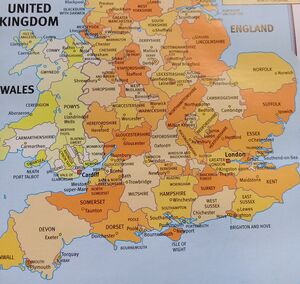East Sussex
| Author:Laxman Burdak, IFS (R) |


East Sussex is a county in South East England on the English Channel coast.
Location
It is bordered by the counties of Kent to the north and east, West Sussex to the west, and Surrey for a short distance to the north-west.
History
East Sussex is part of the historic county of Sussex, which has its roots in the ancient kingdom of the South Saxons, who established themselves there in the 5th century AD, after the departure of the Romans. Archaeological remains are plentiful, especially in the upland areas. The area's position on the coast has also meant that there were many invaders, including the Romans and later the Normans. Earlier industries have included fishing, iron-making, and the wool trade, all of which have declined, or been lost completely.
Districts
The area of East Sussex County Council's jurisdiction is divided into five local government districts. Three are large rural districts (from west to east): Lewes, Wealden, and Rother. Eastbourne and Hastings are mainly urban areas. The rural districts are further subdivided into civil parishes.
Settlements
The location of settlements in East Sussex has been determined both by its history and its geography. The original towns and villages tended to be where its economy lay: fishing along the coast and agriculture and iron mining on the Weald. Industry today tends to be geared towards tourism, and particularly along the coastal strip. Here towns such as Bexhill-on-Sea, Eastbourne, and Hastings lie. Newhaven and Rye are ports, although the latter is also of historical importance. Peacehaven and Seaford are more dormitory towns than anything else. Away from the coast lie former market towns such as Hailsham, Heathfield and Uckfield; Crowborough is a centre for the Ashdown Forest. Lewes, the County town of East Sussex; and Battle, with its Norman Conquest beginnings, and Wadhurst are the other three towns of significance.
Landmarks
The Seven Sisters Park is part of the South Downs National Park. Beachy Head is one of the most famed local attractions, along with the flats along Normans Bay.
Apart from the physical landmarks such as the Downs and the Weald, East Sussex has a great many landmarks of historical interest. There are castles at Bodiam, Herstmonceux, Lewes and Pevensey; and defence works such as the Martello towers and Eastbourne Redoubt. Battle Abbey, built to commemorate the Battle of Hastings; Bateman's, home of Rudyard Kipling, Hammerwood Park, one of the first examples of Greek Revival architecture in the UK; and the University of Sussex buildings at Falmer are among interesting buildings. Bexhill on sea is also home to the De La Warr Pavilion. East Sussex also includes two chalk hill figures, being the Litlington White Horse and the Long Man of Wilmington, which are both situated in the Sussex Downs.

